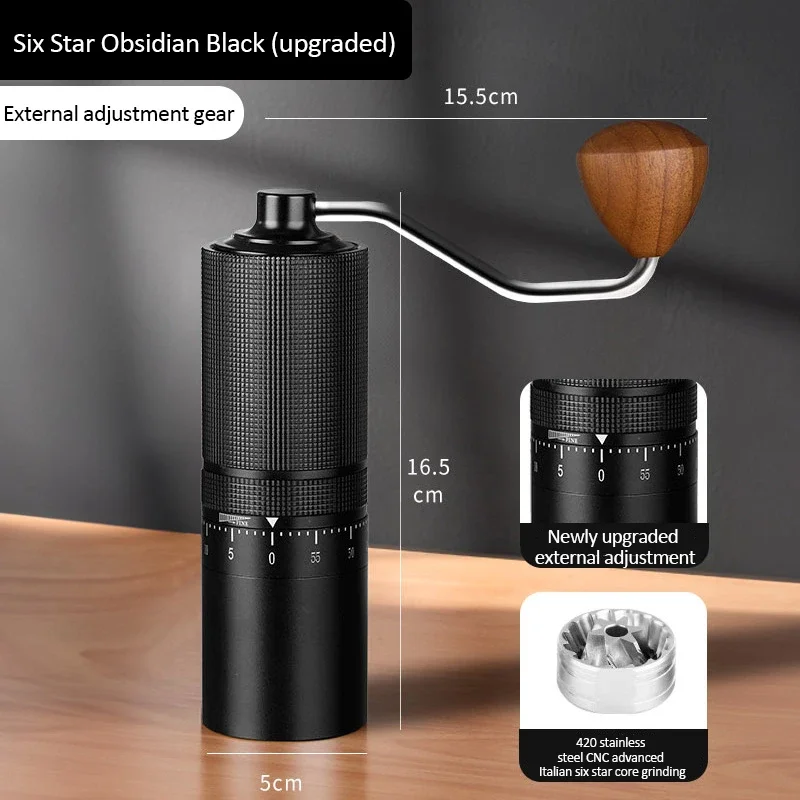Understanding Coffee Grinder Overheating: Causes and Concerns
Yes, coffee grinders can definitely overheat. This happens when the temperature of the motor and grinding components rises beyond safe operating levels—typically when the motor reaches temperatures above 160°F (71°C). Overheating isn’t just an inconvenience; it’s a serious issue that affects both your coffee quality and the longevity of your grinder.
For coffee enthusiasts who value the perfect cup, understanding why grinders overheat is essential. When excessive heat builds up during the grinding process, it can transfer to your coffee beans, altering their flavor profile and potentially ruining your brewing experience.
Several factors contribute to grinder overheating:
– Extended continuous operation
– Grinding too much coffee at once
– Using settings that strain the motor
– Inadequate maintenance
– Poor ventilation around the device
Different types of grinders have varying susceptibilities to overheating. Electric models with high-speed motors tend to generate more heat than their manual counterparts. Understanding the mastering espresso precision grind settings can help you operate your grinder more effectively while minimizing heat issues.
The type of grinder you choose also plays a significant role in heat management. Manual coffee burr grinders typically generate less heat than electric models, making them an excellent choice for heat-sensitive coffee varieties.
Common Causes of Coffee Grinder Overheating
Understanding what causes your coffee grinder to overheat can help you prevent damage and maintain optimal brewing conditions. Here are the primary culprits:
Extended Operation Beyond Design Limits
Most home coffee grinders aren’t designed for continuous operation. Running a grinder for more than 1-2 minutes without a break forces the motor to work harder than intended, generating excessive heat.
Overloading the Grinder
Filling the hopper beyond capacity creates resistance against the motor, causing it to strain and heat up quickly. This is particularly common when grinding large batches for guests or meal prep.
Grinding Too Fine
Setting your grinder to produce very fine grounds, especially for espresso grind settings, requires more power and creates more friction, significantly increasing heat generation. The finer the grind, the harder the motor works.
Bean-Related Factors
– Dense or particularly hard beans create more resistance
– Very oily or dark-roasted beans can cause buildup that increases friction
– Frozen beans initially place greater strain on motors and burrs
Poor Ventilation
Grinders need adequate airflow to dissipate heat. Using them in enclosed spaces or blocking ventilation ports accelerates overheating.
Residue Accumulation
Coffee oils and fine particles build up over time, creating:
– Increased friction between moving parts
– Added resistance to the motor
– Reduced efficiency requiring longer grinding times
Mechanical Issues
– Worn or dull burrs requiring more force to grind effectively
– Misaligned components causing additional friction
– Damaged bearings creating resistance against the motor
The construction material of your grinder also affects heat buildup. All-metal hand grinders tend to conduct heat more readily, though they often include design elements to manage this characteristic.
Warning Signs: How to Tell If Your Grinder Is Overheating
Recognizing the early warning signs of an overheating grinder can prevent damage to both your equipment and your coffee. Here are key indicators to watch for:
Physical Temperature Changes
– The exterior casing becomes uncomfortably hot to touch, especially near the motor
– Heat may be noticeably radiating from the unit
– Some plastic components might feel warmer than usual
Unusual Odors
– A distinct burning smell or electrical odor
– The aroma of burnt coffee (from beans getting overheated)
– A hot, mechanical smell from motor components
Performance Issues
– The grinder slows down noticeably during operation
– Motor sounds strained or labored
– The pitch of the motor changes to a lower, struggling tone
– Inconsistent grind size with more “fines” and “boulders” appearing
Automatic Responses
– Thermal protection features activate, shutting down the grinder
– The motor stops completely despite power being connected
– Circuit breakers or fuses trip when using the grinder
Coffee Quality Changes
– Grounds feel warm or hot to the touch after grinding
– Increased static electricity in the grounds
– Coffee tastes burnt, metallic, or bitter despite proper brewing technique
Understanding the differences between manual and electric coffee grinders can help you choose equipment less prone to overheating issues, especially for frequent or heavy use.
Consequences of Grinder Overheating
When your coffee grinder overheats, the consequences extend beyond mere inconvenience. They affect your coffee’s flavor, your equipment’s longevity, and potentially even your safety.
Impact on Coffee Quality and Flavor:
– Heat transfer to beans destroys volatile compounds responsible for aroma
– Oils begin to oxidize prematurely, creating rancid undertones
– Heat can “cook” the grounds, resulting in bitter, flat-tasting coffee
– Inconsistent particle size leads to uneven extraction during brewing
– Subtle flavor notes become muted or disappear entirely
Damage to the Grinder:
– Motor insulation can degrade, leading to eventual burnout
– Electrical components may fail from repeated thermal stress
– Burrs can lose their edge faster due to metal expansion and contraction
– Plastic components may warp or become brittle
– Internal calibration can shift, affecting grind consistency
– Overall lifespan may decrease by 30-50% with repeated overheating
Safety Concerns:
– Electrical short circuits become more likely as insulation degrades
– Component failure might create sparks or electrical hazards
– In extreme cases, severely overheated motors can pose fire risks
– Thermal damage can compromise the grinder’s built-in safety features
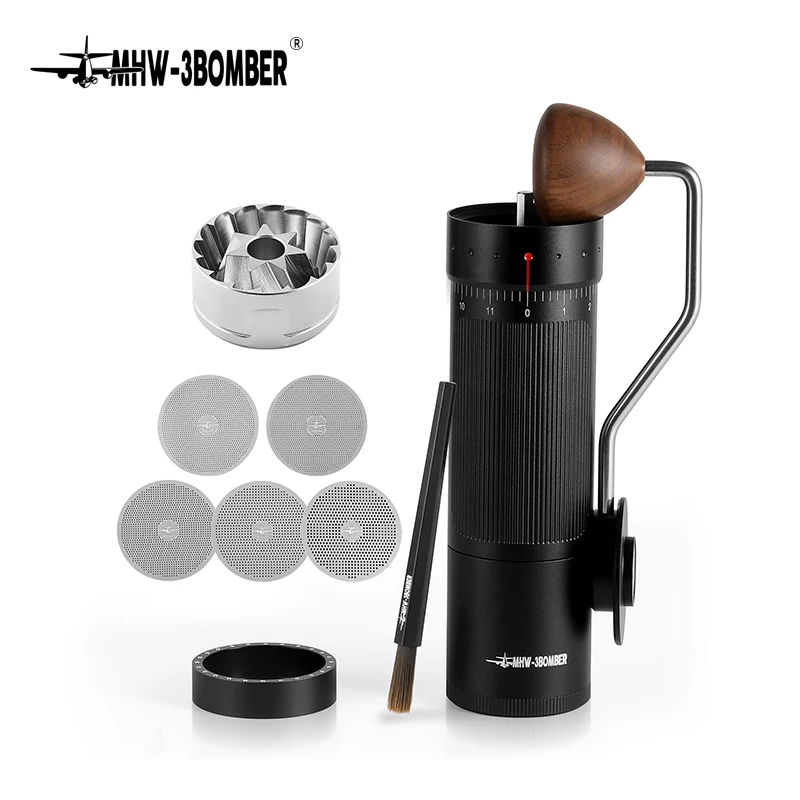
Regular coffee grinder maintenance is essential for preventing many of these issues, as clean and well-maintained equipment runs more efficiently and generates less heat.
Preventing Overheating in Different Types of Coffee Grinders
Preventing overheating extends your grinder’s life and ensures better-tasting coffee. Different types of grinders require specific approaches to heat management.
General Prevention Strategies
Operational Best Practices:
– Grind in short bursts (20-30 seconds) with rest periods between
– Allow 5-10 minutes of cooling time after grinding larger batches
– Follow your manufacturer’s duty cycle recommendations precisely
– Place your grinder in a well-ventilated area away from other heat sources
– Avoid blocking any air vents on electric models
Maintenance Routines:
– Clean your grinder weekly (or after 1-2 pounds of coffee)
– Remove bean debris and oil buildup from burrs or blades
– Check and tighten any loose components that might cause friction
– Oil moving parts if recommended by the manufacturer
Grinder-Specific Prevention Methods
| Grinder Type | Heat Prevention Techniques | Rest Periods |
|---|---|---|
| Blade Grinders | Use pulse grinding technique (3-5 second bursts) | 10-15 sec between bursts |
| Home Burr Grinders | Grind from coarse to fine gradually | 30-60 sec after each minute |
| Commercial Grinders | Follow duty cycle (typically 5 min on/5 min off) | 5+ minutes between batches |
| Manual Grinders | Maintain steady, moderate pace | Minimal rest needed |
Blade Grinder Tips:
– The shorter the grinding session, the better
– Clean the blades and chamber after each use
– Use gentle downward pressure when grinding
Burr Grinder Techniques:
– Start with a coarser setting before moving to finer settings
– Remove and clean burrs regularly to prevent residue buildup
– Listen for changes in motor tone indicating strain
Mechanical coffee grinders offer excellent heat management due to their design, which eliminates motor heat entirely. They’re ideal for heat-sensitive specialty beans.
Environmental conditions also affect overheating potential:
– Keep ambient room temperature moderate
– Avoid using grinders in humid environments
– Ensure adequate air circulation around the unit
Using the correct grind setting for espresso not only improves your shot quality but also reduces unnecessary strain on your grinder, helping prevent overheating issues.
Troubleshooting an Overheated Grinder
If your grinder has overheated, taking the right steps can prevent permanent damage and help identify the underlying cause.
Immediate Actions
- Stop using the grinder immediately when signs of overheating appear
- Unplug the grinder from the power source for safety (for electric models)
- Allow 30-60 minutes of cooling time before any further inspection
- Do not attempt to speed cooling with water, fans, or refrigeration as rapid temperature changes can damage components
Diagnostic Steps
Once cooled completely:
Inspect for blockages:
– Remove the hopper and check for bean jams
– Examine the burr chamber for compacted grounds
– Clear any visible obstructions carefullyCheck the burrs or blades:
– Look for signs of damage, dulling, or misalignment
– Clean thoroughly to remove all residue
– Test rotation manually (when possible) to ensure smoothnessTest motor function:
– Start with a very brief test run (5-10 seconds)
– Listen for unusual sounds indicating mechanical issues
– Check that speed and power seem normalExamine electrical components:
– Inspect cords for damage or overheating
– Check that thermal protection switches have reset
– Look for any burnt smells or discoloration around electrical parts
Post-Overheating Care
- Run the grinder without beans first to check operation
- Start with a coarse setting before attempting fine grinds
- Grind in very short bursts initially to monitor performance
- Consider cleaning more thoroughly with grinder-safe cleaning products
Ceramic burr coffee grinders may handle heat differently than metal burrs and often require specific troubleshooting approaches, but generally offer excellent heat resistance.
Heat Characteristics of Different Grinder Types
Different coffee grinder designs manage heat in unique ways, affecting both grinder longevity and coffee quality.
Blade Grinders
– Generate significant heat due to high-speed motors (15,000+ RPM)
– Heat transfers directly to beans through metal blades
– Poor heat dissipation design in most models
– Temperature can increase rapidly during operation
– Typically reach problematic temperatures after 20-30 seconds of continuous use
Conical Burr Grinders
– Produce less heat than flat burrs due to more efficient grinding path
– Motor typically operates at lower speeds (400-1000 RPM)
– Heat concentrates near the narrow end of the cone
– Usually include better ventilation systems than blade models
– Can typically run 1-2 minutes before significant heat buildup
Flat Burr Grinders
– Create more grinding surface area contact, generating additional heat
– Typically used in higher-end and commercial machines
– Often include enhanced cooling systems in quality models
– Heat distributes evenly across the burr surface
– Generally run hotter than conical burrs during extended operation
Manual Grinders
– Generate minimal heat due to absence of motors
– Hand-cranking speed naturally limits friction
– Heat production directly correlates to grinding speed
– Metal components may still conduct some heat to beans
– Can be used continuously without overheating concerns
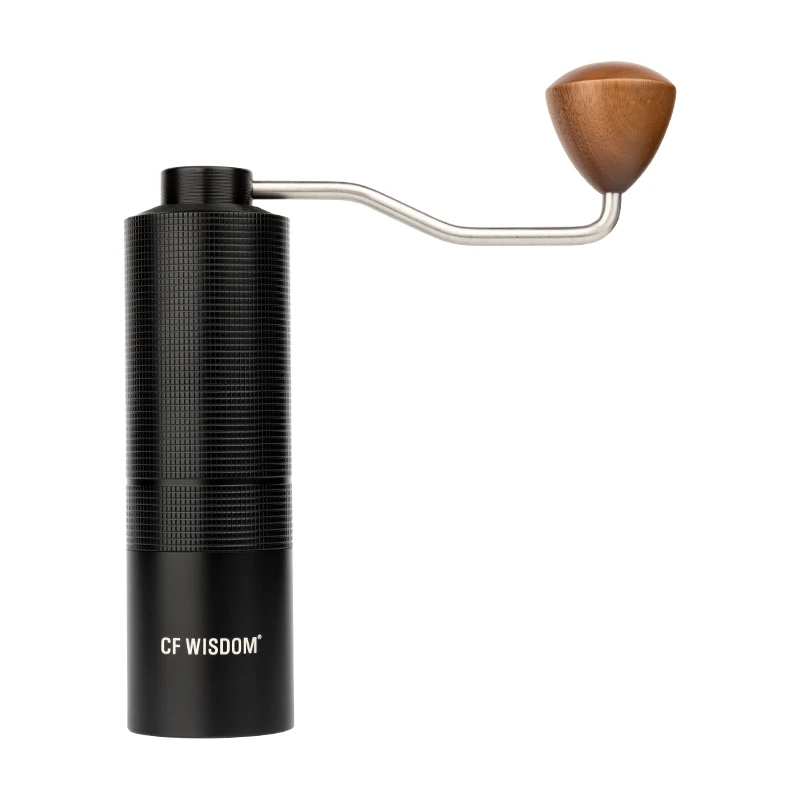
Material construction significantly affects heat management. Understanding the impact of heat retention in metal coffee grinders can help you choose equipment that protects your coffee’s flavor profile.
The Science Behind Heat and Coffee Grounds
Heat’s interaction with coffee is a matter of chemistry that directly impacts your brewing results. Understanding this science helps explain why overheating grinders is so problematic.
Coffee Bean Chemistry and Heat
– Coffee beans contain over 800 aromatic compounds that contribute to flavor
– These compounds are highly volatile and begin to degrade at temperatures above 140°F (60°C)
– Lipids (oils) in coffee oxidize more rapidly when heated, creating rancid flavors
– Heat accelerates the release of CO2 from fresh grounds, affecting extraction
– Sugars in beans can caramelize when overheated, creating unwanted bitterness
Heat Generation Mechanics
– Friction between burrs or blades and beans converts kinetic energy to heat
– Metal parts conduct this heat through the grinder and to the beans
– Electrical motors naturally produce heat during operation
– Coffee’s cellular structure resists grinding, requiring energy that converts to heat
– Finer grinds require more energy and generate more friction and heat
Temperature Impact on Static Electricity
– Heat reduces humidity around grounds, increasing static charge
– Static-charged particles cling to grinder components, increasing retention
– These retained grounds oxidize more quickly due to increased surface area
– Static also causes inconsistent dosing and messy preparation
Heat Distribution in Grinders
– Heat flows from motors through metal components following thermal conductivity principles
– Plastic components can insulate some heat but may warp if temperatures get too high
– Airflow through the grinder (or lack thereof) significantly affects heat dissipation
– Heat transfer rates vary between materials (aluminum conducts heat 5x faster than stainless steel)
Stainless steel manual coffee grinders offer excellent durability while managing heat differently than other materials, often incorporating design elements that limit heat transfer to beans.
Recommended Features for Heat-Resistant Grinders
When choosing a grinder with superior heat management, look for these key features to protect both your equipment and coffee quality:
Thermal Protection Systems
– Automatic shutdown mechanisms that activate before damage occurs
– Temperature sensors that monitor motor and grinding chamber heat
– Warning indicators that alert you to potential overheating
– Graduated power reduction as temperatures rise
Cooling Design Elements
– Enhanced ventilation with strategically placed air vents
– Internal fans in premium electric models
– Heat sink components that draw heat away from grinding areas
– Thermal breaks between motor and grinding chamber
Motor Quality Indicators
– DC motors that run cooler than AC alternatives
– Lower RPM motors that generate less heat (400-1000 RPM is ideal)
– Gear reduction systems that improve efficiency
– Quality copper windings with superior insulation
Material Considerations
– Aluminum components that dissipate heat quickly
– Ceramic burrs that generate less heat than metal
– Exterior shells designed to release rather than trap heat
– Thermal barriers between chambers
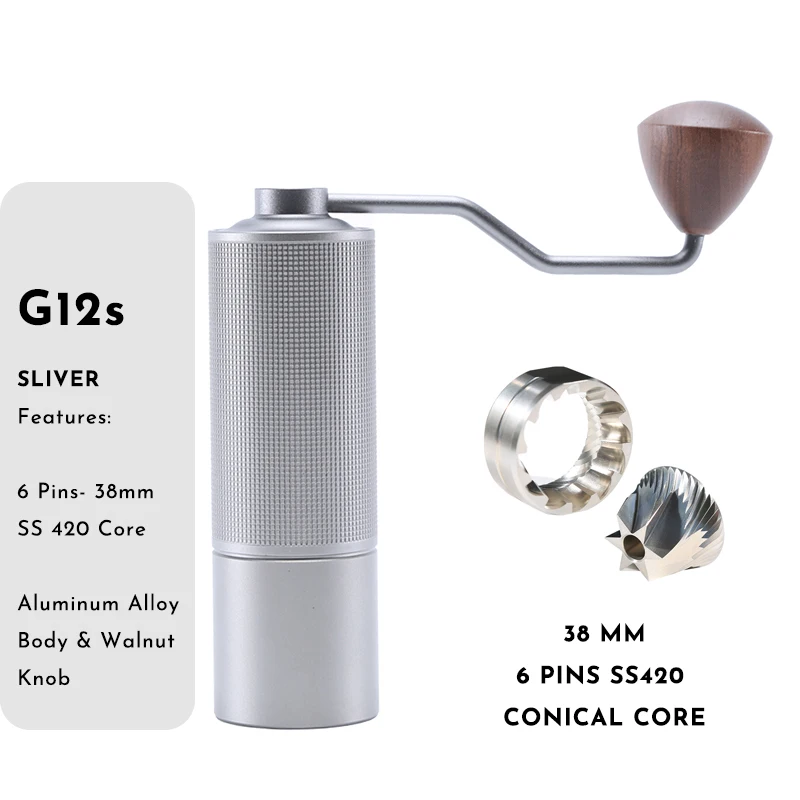
Operational Features
– Duty cycle indicators showing safe operating periods
– Multiple speed settings to reduce heat during longer sessions
– Programmable timing to prevent excessive continuous use
– Direct drive systems with fewer heat-generating components
Precision manual grinders often incorporate thoughtful design elements that naturally manage heat while delivering exceptional grind consistency.
When to Choose Manual Over Electric Grinders
Manual coffee grinders offer significant advantages in heat management that make them ideal for certain situations, especially for heat-sensitive specialty coffees.
Heat Management Advantages
– No motor means no electrical heat generation
– Slower grinding naturally produces less friction
– Hand-powered operation prevents overheating entirely
– Typically smaller batches limit continuous grinding time
– Simple mechanics mean fewer heat-generating components
Ideal Scenarios for Manual Grinding
– When preparing heat-sensitive light roasts
– For small batch specialty coffee preparation
– When traveling or camping without reliable electricity
– In warm environments where additional heat is undesirable
– For single-dose grinding where freshness is paramount
Considerations When Choosing
– Batch size: Manual grinders are ideal for 1-2 cups at a time
– Time investment: Manual grinding takes 1-3 minutes per cup
– Physical effort: Some users may find hand grinding strenuous
– Precision: Quality manual grinders often provide excellent consistency
– Portability: Manual grinders work anywhere without power
Trade-offs to Consider
– Convenience vs. heat control
– Speed vs. flavor preservation
– Capacity vs. quality
– Initial cost vs. long-term durability
Manual coffee grinders for espresso offer exceptional precision while eliminating heat-related issues that can compromise espresso flavor compounds.
Fine Adjustment Hand Grinder, Precision Manual Grinder, Travel Coffee Grinder
Price range: $185.11 through $494.63 Select options This product has multiple variants. The options may be chosen on the product pageHand Burr Grinder, Hand Crank Coffee Grinder, Manual Espresso Grinder, Portable Coffee Grinder
Price range: $262.72 through $300.22 Select options This product has multiple variants. The options may be chosen on the product pageManual Burr Mill, Manual Coffee Grinder Stainless Steel, Manual Coffee Mill Grinder, Mechanical Coffee Grinder
Price range: $127.26 through $130.32 Select options This product has multiple variants. The options may be chosen on the product pageHand Burr Grinder, Manual Coffee Grinder Stainless Steel, Precision Manual Grinder
Price range: $183.64 through $187.52 Select options This product has multiple variants. The options may be chosen on the product page
Frequently Asked Questions About Coffee Grinder Overheating
How long can I continuously run my coffee grinder?
Most home electric grinders should not run continuously for more than 60-90 seconds. Commercial grinders typically have duty cycles of 5 minutes on, 5 minutes off. Manual grinders can be used as long as the operator can maintain consistent motion.
Can I grind immediately after an overheating incident?
No, you should allow your grinder to cool completely for at least 30-60 minutes after overheating before attempting to use it again. Repeated heat cycles without proper cooling can permanently damage components.
Will my thermal cutoff switch reset automatically?
Most thermal protection switches in modern grinders reset automatically after cooling, typically within 15-30 minutes. Some models may require manual reset by unplugging the unit for several minutes.
Does room temperature affect grinder overheating?
Yes, ambient temperature significantly impacts grinder performance. Using a grinder in an already warm environment (over 85°F/29°C) reduces its ability to dissipate heat effectively and increases overheating risk.
Can certain beans cause more overheating than others?
Yes. Harder beans (like some high-altitude varieties), very dense beans, and extremely oily dark roasts create more resistance and can accelerate overheating. Frozen beans initially place extra strain on motors and mechanisms.
Is overheating more common with certain grind sizes?
Finer grinds generally create more heat due to increased resistance and friction. Espresso and Turkish grinds are most likely to cause overheating, while coarse grinds for French press typically generate less heat.
How often should I clean my grinder to prevent overheating?
For regular home use, clean your grinder weekly or after every 1-2 pounds of coffee. Commercial environments may require daily cleaning. Always follow manufacturer recommendations for your specific model.
Maintaining Your Grinder: Long-term Heat Prevention Practices
Establishing a regular maintenance routine is the most effective way to prevent overheating issues and extend your grinder’s life.
1. Establish a Cleaning Schedule
– Daily: Brush out visible grounds from the grinding chamber
– Weekly: Remove and clean burrs thoroughly
– Monthly: Deep clean all accessible parts
– Quarterly: Check and tighten any loose screws or components
2. Proper Cleaning Technique
– Use a grinder brush or soft paintbrush to remove coffee particles
– Clean burrs with a dry brush—never use water on burrs or motors
– Consider specialized grinder cleaning products for removing oils
– Use compressed air (at low pressure) to clear hard-to-reach areas
3. Operational Best Practices
– Allow your grinder to rest between batches
– Keep track of usage time to avoid exceeding duty cycles
– Start with a coarser setting before grinding fine
– Listen for changes in motor sound that might indicate problems
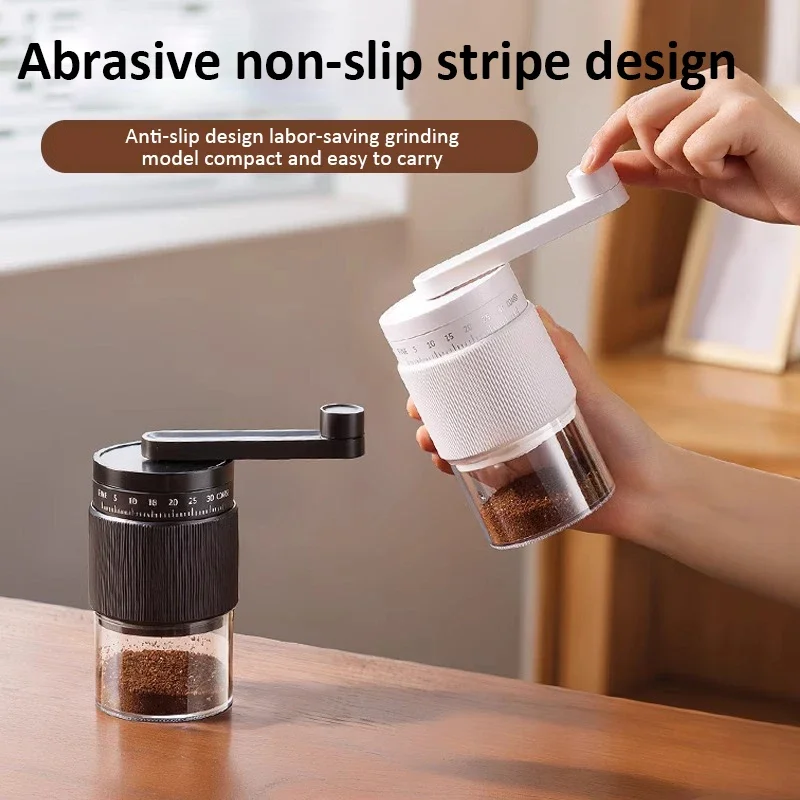
4. Burr Maintenance
– Check burrs for signs of dulling or damage every 3-6 months
– Replace burrs according to manufacturer recommendations (typically every 300-1000 pounds of coffee)
– Ensure proper burr alignment after cleaning
– Consider professional servicing for high-end grinders annually
5. Storage Considerations
– Store your grinder in a cool, dry place
– Keep it free from dust when not in use
– Avoid storing near heat sources or in direct sunlight
– Ensure ventilation areas remain unobstructed
By following these maintenance practices, you’ll not only prevent overheating but also ensure your coffee grinder delivers consistent results and serves you well for years to come. At Savor Suite, we understand that proper care of your manual grinder is essential to achieving the perfect cup of coffee every time.

